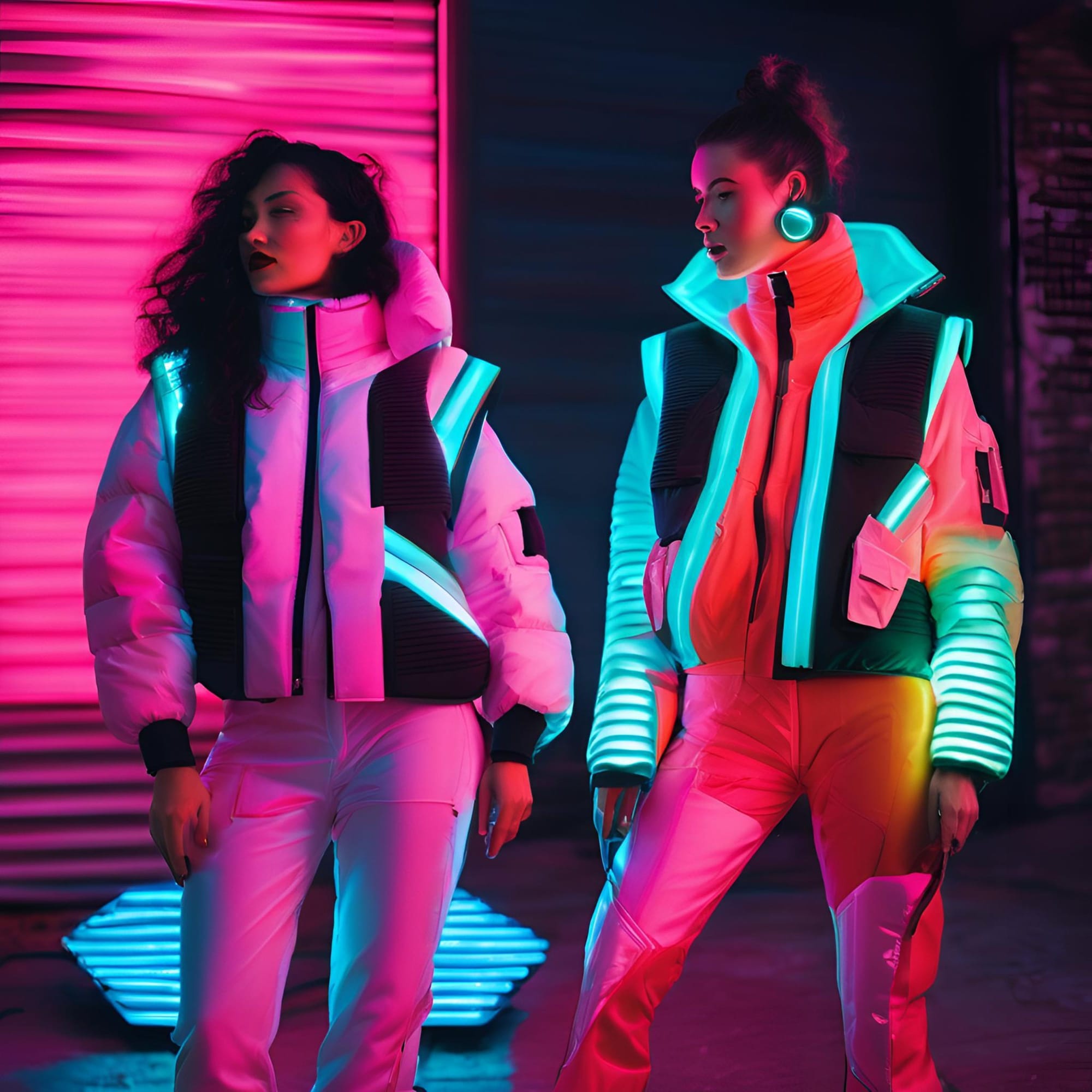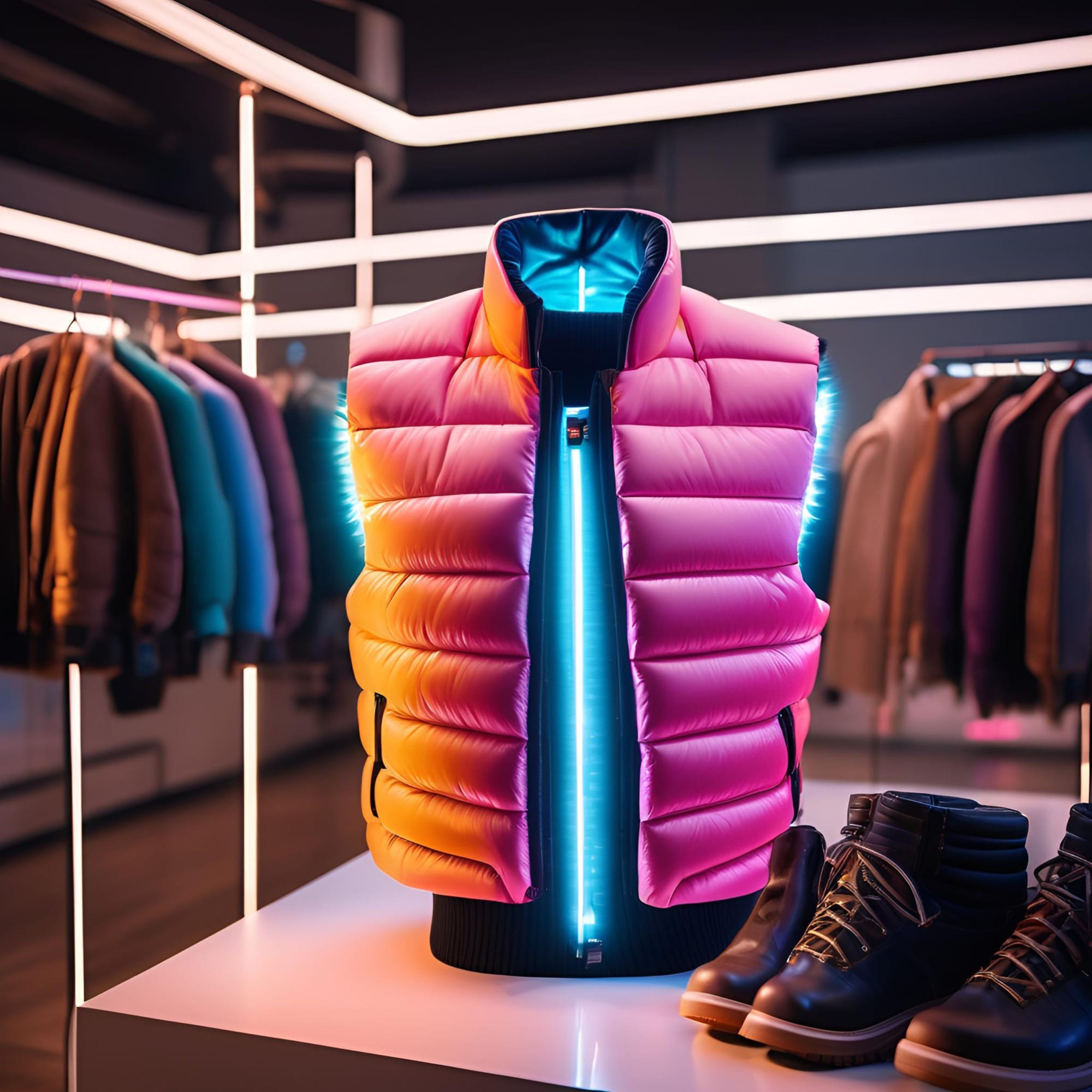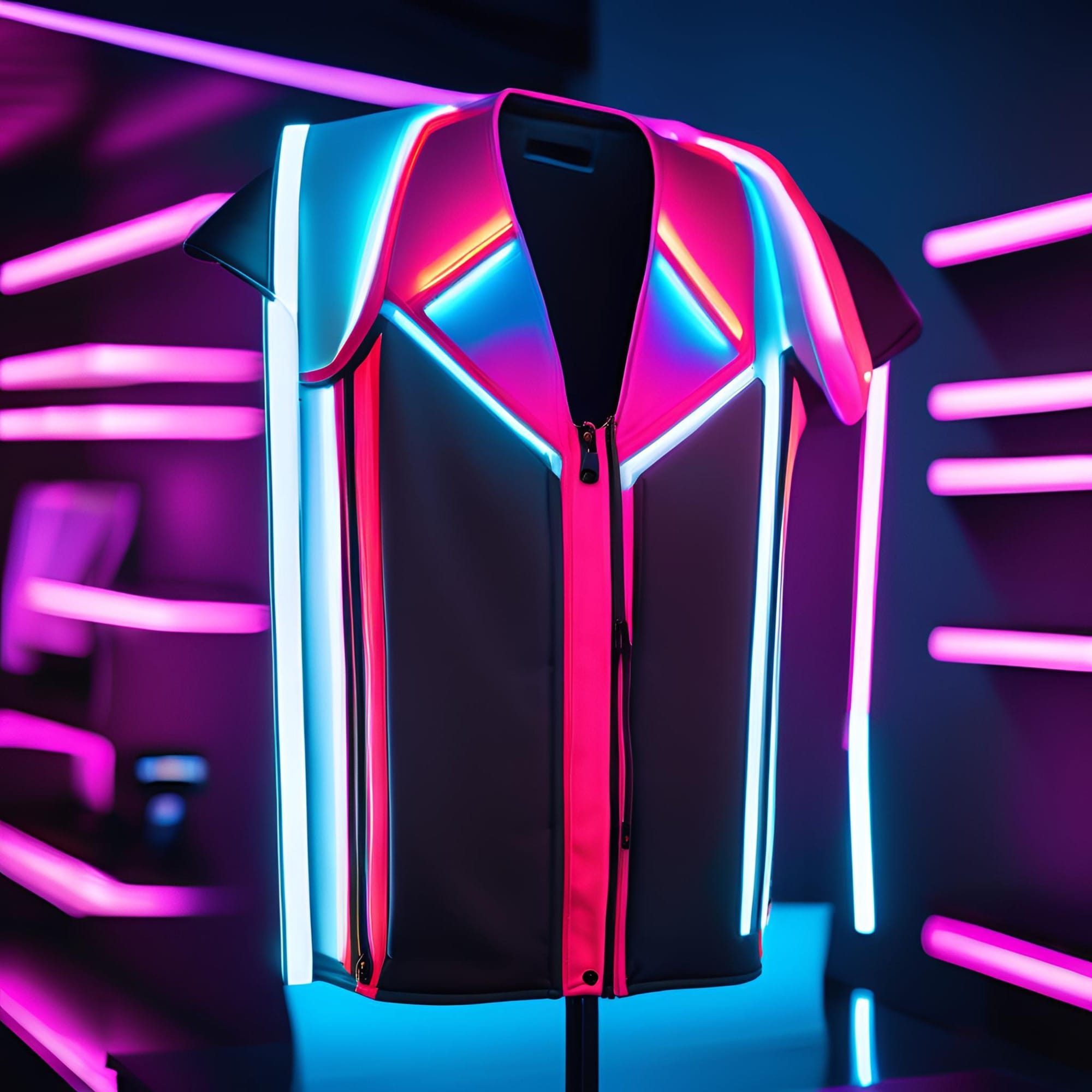"Stay Toasty: Exploring the Future of Electric Vests and Boots for All-Day Comfort"










buymeacoffee.com coming soon..
# Electric Wearables: The Future of Staying Warm
Introduction to Electric Wearables
As winter's chill envelops us and daylight diminishes, the quest for warmth becomes paramount. Enter electric wearables—an innovative solution that seamlessly merges technology with comfort, enhancing our daily lives during the colder months. Electric vests and boots are at the forefront of this trend, offering a modern approach to warmth that caters to a diverse range of lifestyles and needs.
Overview of Electric Vests and Boots
Electric wearables, particularly vests and boots, are designed with integrated heating elements that deliver consistent warmth to the body. Electric vests feature strategically placed heating pads that target core areas such as the chest and back. In contrast, electric boots are equipped with heating elements that warm the feet and toes. These products transcend seasonal novelty, marking a significant leap in how we experience comfort in cold weather.
Benefits of Electric Wearables
The advantages of electric wearables extend far beyond mere warmth. They offer adjustable heat settings, enabling users to customize their temperature based on personal preferences and environmental conditions. Many electric wearables feature quick heating times and lightweight designs, enhancing convenience and wearability throughout the day. Additionally, energy efficiency is increasingly prioritized, ensuring minimal power consumption while maximizing warmth.
Target Audience for Electric Wearables
The appeal of electric vests and boots spans a broad demographic, including outdoor enthusiasts, commuters, and individuals working in cold environments. From avid skiers seeking warmth on the slopes to office workers battling chilly air conditioning, electric wearables provide a versatile solution that accommodates various lifestyles. As awareness of their benefits grows, electric wearables increasingly attract consumers looking for practical yet stylish options to stay warm during winter months.
In summary, electric wearables represent an exciting development in winter apparel, combining technology, comfort, and user-centric design to meet the demands of today’s consumers. As we delve deeper into the specifics of electric vests and boots, we will explore the technological advancements that distinguish these products, their comfort and functionality, and the future trends shaping this burgeoning market.
Technological Advancements in Electric Vests
As the demand for innovative solutions to combat cold weather continues to rise, electric vests have evolved significantly, integrating cutting-edge technology to enhance functionality and user experience. This section delves into the key advancements that have transformed electric vests into essential wearables for staying warm in frigid conditions.
Heating Mechanisms and Materials Used
Electric vests utilize various heating mechanisms to deliver warmth efficiently. The most common method involves carbon fiber heating elements, which are lightweight, flexible, and capable of providing consistent heat across the vest's surface. These elements warm up quickly, offering immediate relief from the cold.
Advancements in materials have also played a crucial role. High-performance fabrics, such as moisture-wicking and breathable materials, are employed to ensure comfort while maintaining thermal insulation. Lightweight insulation layers trap body heat, allowing the vest to function effectively even when the heating elements are turned off.
Battery Life and Charging Options
A critical consideration in electric vest design is their power source. Modern electric vests feature rechargeable lithium-ion batteries, which boast improved energy density and longevity compared to older technologies. Depending on the heat setting, these batteries can provide several hours of warmth on a single charge.
To enhance convenience, many electric vests come with multiple charging options, including USB ports for easy charging on the go. Some manufacturers have developed vests with integrated power banks, allowing users to charge devices while staying warm. Furthermore, advancements in wireless charging technology may soon enable even more seamless experiences, eliminating the need for cumbersome cables.
Integration with Smart Technology
The integration of smart technology into electric vests has opened new avenues for personalization and control. Many modern vests feature smartphone connectivity, allowing users to adjust heat settings and monitor battery life through dedicated apps. This level of control enables wearers to customize their comfort based on specific needs and environmental conditions.
Additionally, some electric vests are equipped with sensors that detect temperature fluctuations and automatically adjust heating levels accordingly. This smart technology not only enhances user comfort but also conserves battery life, ensuring that the vest remains functional for longer periods.
In summary, technological advancements in electric vests have significantly improved heating mechanisms, battery efficiency, and integration with smart technology. These innovations enhance the user experience and position electric vests as a viable solution for those seeking warmth and comfort in colder climates. As technology continues to evolve, we can anticipate even more exciting developments in electric wearables.
Comfort and Functionality of Electric Boots
Design and Fit Considerations
Electric boots have evolved in design, prioritizing warmth alongside comfort and style. Manufacturers understand that a sleek, modern appearance can attract a broader audience. Many electric boots now resemble traditional footwear while incorporating advanced heating elements. A proper fit is crucial; boots must provide adequate support for extended wear, particularly in cold conditions. Many models feature adjustable elements like laces, straps, or elastic bands, allowing users to customize the fit. Padded insoles and breathable linings further enhance comfort, making them suitable for both outdoor adventures and daily wear.
Weather Resistance and Durability
To ensure practicality, electric boots are often constructed with weather-resistant materials. This is vital for regions with harsh winters, where snow, rain, and slush are common. Waterproof membranes or treatments are typically integrated into the design, preventing moisture from seeping in while maintaining breathability. Durability is also a key consideration; electric boots are engineered to withstand the rigors of outdoor activities. Features like reinforced toe caps, rugged outsoles, and resilient upper materials contribute to their longevity, ensuring users can rely on them season after season.
Safety Features and User Experience
Safety is paramount in electric boot design. Many models incorporate non-slip soles to provide traction on icy or uneven surfaces, mitigating the risk of slips and falls. Reflective elements may be added to enhance visibility in low-light conditions, making them safer for nighttime use. User experience is further enhanced through intuitive heating controls. Some electric boots feature easy-to-use interfaces, allowing wearers to adjust temperature settings quickly—often via buttons located near the ankle or through smartphone apps for added functionality. The combination of safety features, comfort, and cutting-edge technology ensures that electric boots keep feet warm while providing peace of mind in various environments.
In summary, the comfort and functionality of electric boots hinge on thoughtful design, robust materials, and user-oriented features. As technology continues to advance, these boots are poised to become essential gear for those seeking warmth and safety in colder climates.
Future Trends in Electric Wearables
As demand for electric wearables continues to grow, several trends are emerging that promise to shape the future of this innovative industry. From sustainability to personalization, these trends reflect advancements in technology and shifts in consumer preferences and environmental consciousness.
Sustainability and Eco-Friendly Options
One significant trend in the electric wearables market is the increasing emphasis on sustainability. As consumers become more aware of their environmental impact, manufacturers are responding by developing eco-friendly materials and production processes. This includes using recycled fabrics, biodegradable components, and sustainable manufacturing techniques. For instance, some companies are exploring integrating solar panels into electric vests, allowing wearers to harness renewable energy while staying warm. These initiatives not only reduce the carbon footprint of electric wearables but also appeal to environmentally conscious consumers.
Potential for Customization and Personalization
Another exciting trend is the potential for customization and personalization of electric wearables. As technology advances, consumers increasingly seek products that cater to individual needs and preferences. Future electric vests and boots may offer customizable heating settings, allowing users to adjust warmth according to their comfort levels. Additionally, wearers could choose from various styles, colors, and features to create a product that reflects their tastes. This shift toward personalization enhances the user experience and fosters a deeper connection between consumers and their electric wearables.
Market Growth and Consumer Insights
The electric wearables market is poised for significant growth, driven by technological advancements and evolving consumer insights. As more people seek innovative solutions for comfort and warmth, the market is expected to expand, attracting new players and fostering healthy competition. Research indicates that consumers are increasingly interested in integrating smart technology with electric wearables, such as fitness tracking or app connectivity. This growing interest suggests that the future of electric vests and boots will focus on functionality and incorporate smart features that enhance the overall user experience.
In summary, the future of electric wearables looks promising, with trends focusing on sustainability, customization, and market expansion. As technology continues to evolve, consumers can expect even more innovative and tailored solutions to keep them warm and comfortable throughout the colder months and beyond.
Conclusion: The Future of Staying Warm
Looking ahead, the future of electric wearables, such as vests and boots, promises to redefine our approach to staying warm in everyday life and extreme conditions. The integration of advanced technology into clothing is not merely a trend; it represents a significant shift in how we incorporate comfort and functionality into our daily routines.
Electric vests and boots have emerged as essential items for individuals seeking warmth without sacrificing mobility or style. With innovations in heating mechanisms and materials, users can enjoy a customized warmth experience that adjusts to their preferences and external conditions. This is particularly beneficial during the colder months, ensuring that outdoor enthusiasts, commuters, and anyone needing reliable warmth can feel comfortable all day long.
Moreover, advancements in battery life and charging options mean that electric wearables are becoming more user-friendly and efficient. Integrating these garments with smart technology allows for greater control and convenience, making it easier for users to manage their warmth levels through mobile apps or voice commands. This intersection of fashion and technology is paving the way for a new era of personal comfort, where staying warm becomes seamless and effortless.
The potential for sustainability and eco-friendly options in electric wearables is particularly encouraging. As consumers become increasingly conscious of their environmental impact, manufacturers are exploring sustainable materials and energy-efficient technologies. This conscientious approach addresses environmental concerns and aligns with the values of a growing segment of consumers who prioritize ethical purchasing decisions.
Customization and personalization are also on the horizon, enabling users to tailor their electric wearables to their specific needs. Whether adjusting heating levels or selecting styles that match individual aesthetics, the future of electric vests and boots will empower consumers to express themselves while staying warm.
As the market for electric wearables continues to grow, we can anticipate exciting developments that will further enhance the user experience. Insights from consumer trends will shape the next generation of products, leading to innovations prioritizing both comfort and practicality.
In conclusion, electric vests and boots are more than just innovative garments; they represent a forward-thinking approach to personal comfort in an ever-changing climate. With technological advancements, sustainable practices, and a focus on user experience, the future of staying warm looks promising, ensuring we can embrace the chill of winter while remaining stylish and cozy. As we move toward summer, electric wearables will undoubtedly continue to be valuable assets in our wardrobes, providing warmth and functionality we can rely on year-round.






Member discussion